Scroll. Tap. Buy.
That’s how fast today’s customers make decisions, and if your brand isn’t ready to sell where people spend the most time (hint: social media), you’re already behind.
Social commerce isn’t a buzzword anymore; it’s a full-blown revolution. Instagram, TikTok, Facebook, Pinterest… these platforms aren’t just for likes and follows. They’re your new storefronts. And the checkout is built right into the feed.
Whether you’re a growing DTC brand, an agency, or a marketing team trying to keep up, social commerce is the shortcut between discovery and purchase, and the brands that master it are turning casual scrollers into loyal buyers every day.
But here’s the kicker: posting a few product pics isn’t enough. You need a strategy. A workflow.
This guide will show you how to:
- Make sense of social commerce
- Choose the best platforms for your audience
- Create content that actually converts
Let’s break it all down and help you sell smarter on social media.
Social commerce is exactly what it sounds like: selling products directly through social media platforms . No redirects. No clunky checkout pages. Just smooth, scroll-to-shop experiences where content and commerce collide.
But this isn’t just about adding product tags to your Instagram posts. It’s a shift in how consumers discover, engage with, and ultimately buy from brands – all without ever leaving the app.
And in 2025, this is no longer a nice-to-have. It’s where real buying behavior is happening.
While social commerce and traditional e-commerce both drive sales, the way they do it couldn’t be more different. Here’s a quick breakdown:
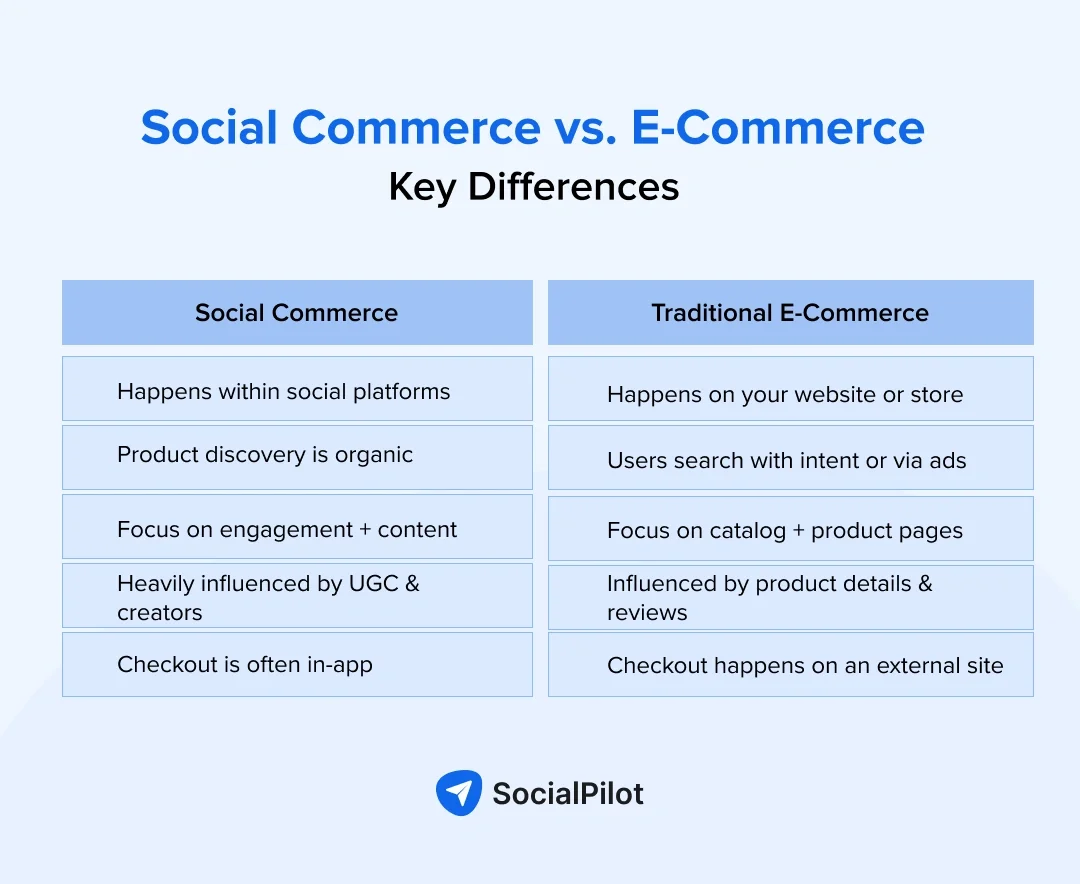
From swipe-ups to shoppable feeds, these platforms are leading the charge in turning content into conversions:
- TikTok
Each one offers unique tools for social selling, and we’ll break them down in detail later in this guide.
Social commerce isn’t a trend, it’s a transformation. And, it’s reshaping the way brands sell and how consumers make decisions.
Whether you’re a startup or an established brand, the shift toward shopping within social media platforms is happening faster than most teams can keep up with, and the data proves it.
- According to a Forbes article, the global social media commerce market is projected to reach $8.5 trillion by 2030 from $800+ billion in 2024.
- In the U.S. alone, over 104 million people made at least one purchase through a social platform in 2024.
- According to Emarketer, brands embracing social commerce see up to 20% higher conversion rates than traditional e-commerce funnels.
What’s fueling this boom? The buying power and behavior of Gen Z and Millennials.
- According to Infosys’ article, over 97% of Gen Z use social media as their top source for shopping or product discovery.
- A survey by GWI found that 54% of social media users research products on social platforms, and 71% are more likely to buy based on social media recommendations (2020).
- In China, live commerce already drives over 10% of all online sales, as per the Verdict UK report. And, similar trends are rapidly gaining ground in the U.S. through TikTok Live and Instagram Live Shopping.
According to a Statista report, the average person spends over 135 minutes per day on social platforms, not just consuming content, but engaging with brands, sharing recommendations, and discovering products they didn’t even know they needed.
Social commerce works because it fits right into how we already use these platforms.
Here’s why users are leaning into social shopping:
- It’s fast: See → Like → Buy. No extra tabs or logins.
- It feels natural: You’re already engaging with the brand, so the buy is low-friction.
- It’s social proof–driven: People buy what their favorite creators, friends, or influencers use.
- It’s discovery-first: Products find the user, often before the user searches for them.
And for brands? It shortens the sales funnel from weeks to minutes. And it also changed the buyer journey and their purchasing behavior.
Social commerce isn’t just about trends; it’s about measurable business impact. From reducing acquisition costs to increasing customer lifetime value, here’s how social commerce drives real returns:
Drives Faster Conversions with Less Friction
By allowing customers to purchase without ever leaving the app, social commerce shortens the sales funnel and speeds up the path to purchase, boosting your conversion rate significantly.
Shopify analysis found that normally e-commerce sites convert at around 1-3%, while social commerce posts (especially Reels, TikToks, or Lives with direct product tags) regularly see conversion rates of 4%, thanks to in-app checkout and impulse-friendly content.
Lowers Acquisition Costs
With built-in discovery via platform algorithms and creator partnerships, brands can attract customers organically or at a lower cost compared to traditional ad funnels.
According to the Wask analysis, traditional ad campaigns can cost brands anywhere from $ 0.50 to $2 per click, with even higher costs in competitive industries such as beauty or wellness.
With social commerce, brands using creator partnerships, UGC, or direct selling in DMs are acquiring customers at zero direct cost, especially when leveraging organic reach or group-based referrals.
Improves Marketing Efficiency
Social commerce delivers real-time feedback on what content and products are performing, so you can double down on what works and stop wasting time and ad spend on what doesn’t.
Instead of paying for impressions or clicks, social commerce monetizes organic visibility and leverages creator audiences who already have built-in trust.
Boosts Average Order Value and Repeat Purchases
Social commerce doesn’t just drive first-time buyers – it nurtures repeat customers through consistent exposure to product content, community interaction, and creator loyalty.
By combining engaging content with product discovery, brands can upsell, cross-sell, and re-engage customers more naturally, increasing customer lifetime value.
Maximizes Reach Through Social Algorithms
Unlike traditional e-commerce, where visibility depends on SEO or ad budgets, social platforms amplify top-performing shoppable content, boosting exposure organically and cost-effectively.
Social commerce is thriving, but how it works depends on where you show up. Each platform offers unique tools to help brands turn content into conversions.
Here’s a quick breakdown of the key players and how to get started:
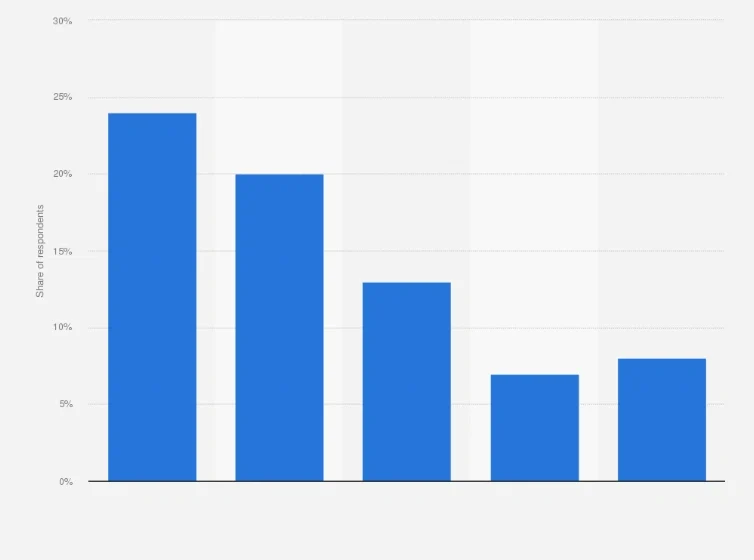
1. Instagram Shopping
Instagram is a visual-first platform, perfect for product discovery. Its commerce features are tightly integrated into the user experience. According to Statista, Instagram has over 2 billion monthly active users, making it a powerful platform for showcasing and selling products.
Best for: Fashion, beauty, wellness, lifestyle, DTC brands
Key Features for Social Commerce by Instagram:
- Product Tagging: Tag products in posts, Stories, Reels, and even Lives.
- Instagram Shop Tab: A dedicated storefront on your profile where users can browse collections.
- In-App Checkout: Customers in supported countries can complete purchases without leaving the app.
- Product Collections: Curate seasonal, thematic, or category-based product lines.
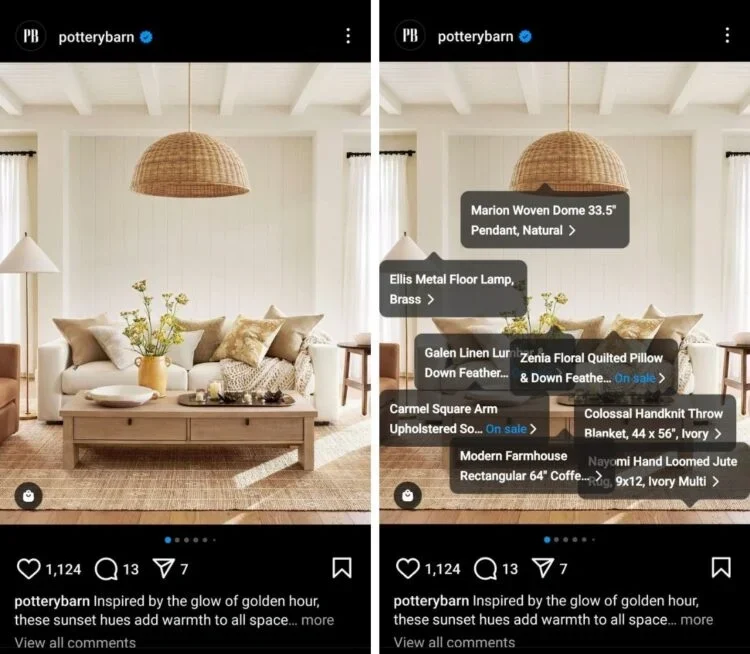
How to Set Up Instagram Shopping:
- Connect to Meta Commerce Manager (via your Facebook Business Page).
- Upload your product catalog using Meta’s Catalog Manager or an eCommerce integration like Shopify or BigCommerce.
- Switch to a business or creator account on Instagram.
- Submit your profile for review under “Business > Shopping” in settings.
- Once approved, start tagging products in your content.
Instagram is all about aesthetics and inspiration. If your products are visually appealing and cater to a younger, style-conscious audience, Instagram Shopping is a perfect fit. So, the business page should use Reels, Stories, and product tags to turn scrolls into sales.
2. Facebook Shops
Facebook offers one of the most robust native shopping experiences for businesses, with features designed for both product discovery and customer engagement.
Best for: Local businesses, retailers with broad catalogs, service-based brands
Key Features:
- Facebook Shop: A customizable storefront where users can browse, save, and purchase.
- Catalog Integration: Sync your product catalog using Commerce Manager.
- Messenger Integration: Let users ask questions or get support instantly.
- Instagram Sync: Automatically extend your catalog and shop to Instagram Shopping.

How to Get Started:
- Go to Meta Commerce Manager and create a new shop.
- Choose a checkout method: on Facebook/Instagram, on your website, or via DM.
- Upload your catalog or connect via eCommerce platforms.
- Customize your shop layout to reflect your brand.
- Tag products in posts or link directly from Facebook Ads.
Facebook’s strength lies in its wide demographic reach and built-in trust. It’s great for businesses with existing catalogs, community-driven sales, or a need for Messenger-based support. Perfect if you’re targeting older generations or want seamless Instagram sync.
3. TikTok Shop
TikTok has turned entertainment into impulse shopping. With its short-form, viral video format and creator-powered ecosystem, TikTok Shop is quickly becoming a major force in social commerce.
Best for: Trendy products, tech gadgets, fast fashion, Gen Z-focused brands
Key Features:
- In-Video Product Tags: Tag products in organic or sponsored videos.
- Livestream Shopping: Sell products during live broadcasts.
- Creator Collaboration: Leverage affiliate partnerships for influencer-led selling.
- On-Platform Checkout: In supported regions, users can purchase without leaving the app.
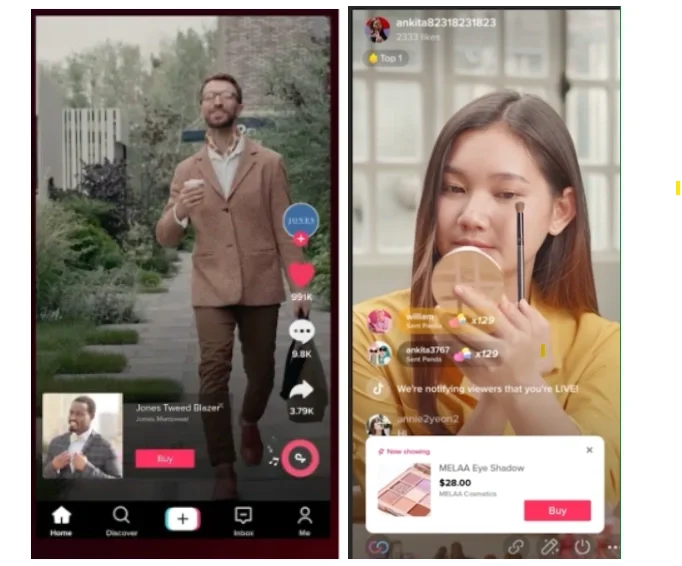
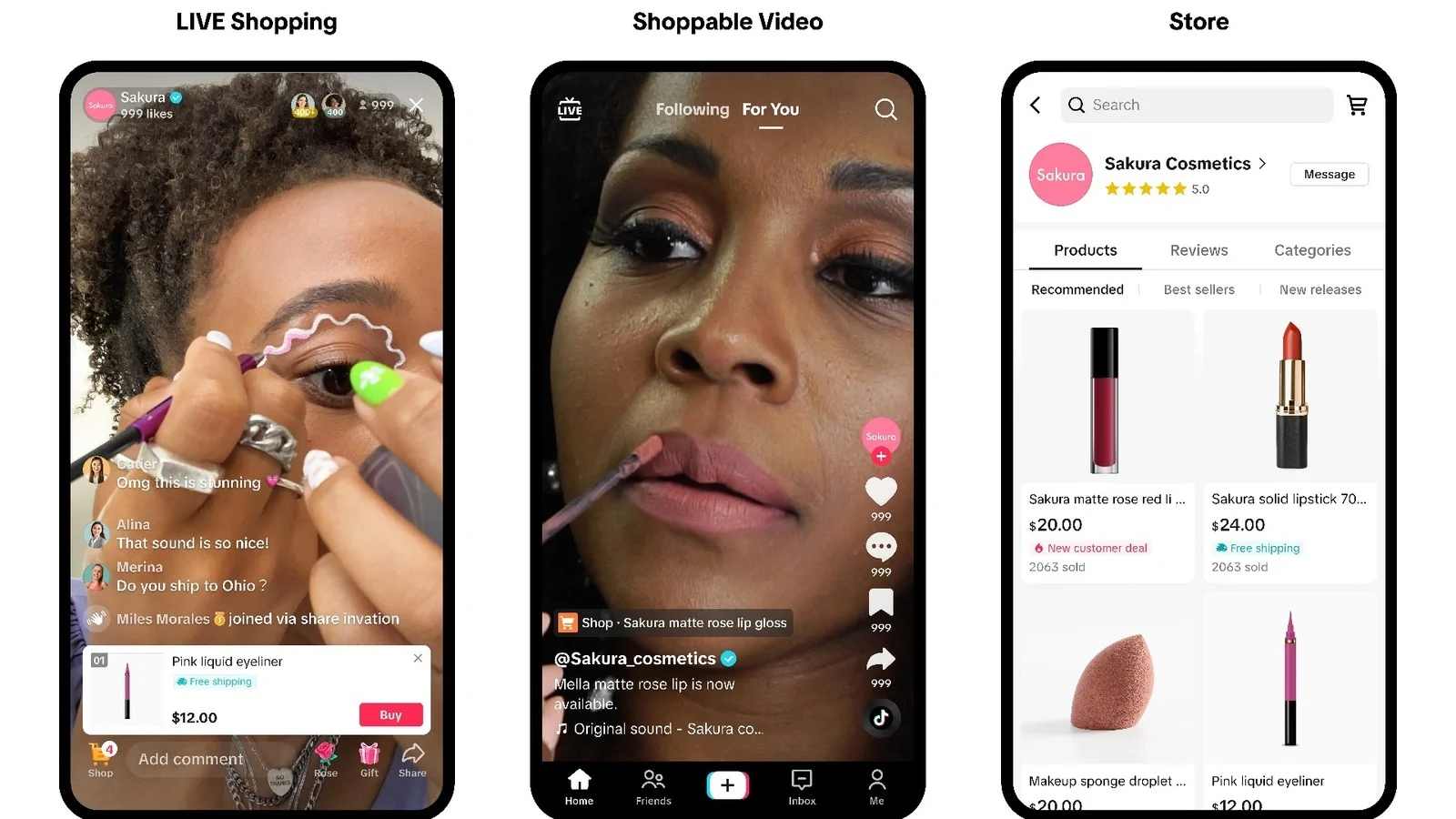
How to Get Started:
- Create a TikTok for Business and a TikTok Shop Seller account.
- Upload your product catalog or integrate via Shopify.
- Tag products in your content or connect with creators to promote for you.
- Use live shopping to showcase product features, answer questions, and drive urgency.
TikTok thrives on entertainment and quick decisions. If your product can go viral or be demoed in under 60 seconds, TikTok Shop is where you need to be. It’s ideal for high-volume, low-cost products that benefit from creator-driven hype.
4. Pinterest Shopping
Pinterest is a discovery-driven platform where users actively seek out inspiration and ideas, making it uniquely powerful for product discovery and niche targeting.
Best for: Home decor, DIY, weddings, seasonal, or evergreen products
Key Features:
- Product Pins & Rich Pins: Automatically display product details like price, availability, and title.
- Pinterest Catalogs: Upload and manage a product feed to populate your Shop.
- Shopping Ads: Turn organic pins into product ads.
- Verified Merchant Program: Gain access to enhanced analytics and trust badges.
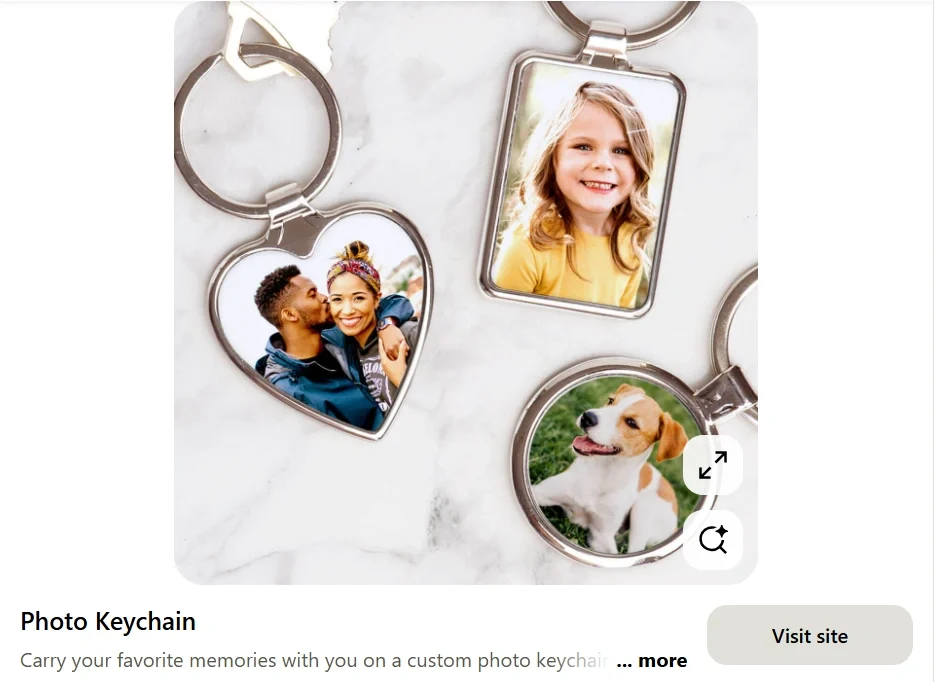
How to Get Started:
- Create a Pinterest Business account.
- Upload your product feed via the Catalogs tool.
- Apply for the Verified Merchant Program for enhanced visibility.
- Tag products in organic Pins, Idea Pins, and ads.
Pinterest users are planners, not just browsers. If your products solve a problem or fit into bigger life moments (like events or renovations), Pinterest is a goldmine. It works well for driving long-term traffic and high-intent purchases.
Getting into social commerce is easy – doing it strategically is what sets successful brands apart. Major players like Glossier, IKEA, Casetify, Zara, Nike, and Walmart are already leveraging social platforms to drive real sales and engagement.
Here’s how to build a smart, scalable approach that drives real results, not just clicks and likes.
1. Choose the Right Channels for Your Audience
Not every social platform fits every brand. Start by understanding where your audience spends time and, more importantly, where they’re ready to shop.
- Selling aesthetic or lifestyle products? Instagram is ideal.
- Targeting Gen Z with fast-moving products? Lean into TikTok.
- Offering home decor, DIY kits, or wedding-related items? Pinterest wins with long-term, high-intent discovery.
- Want broader reach and Messenger-based support? Facebook Shops is a strong base.
Use your existing audience data (demographics, engagement insights) to prioritize platforms before investing in new ones.
2. Optimize Content for Discovery and Conversion
Your content isn’t just promotional; it needs to stop the scroll and drive action. The best-performing social commerce content has one goal: to show the product in use, in context, and in a way people trust.
What to focus on:
- Product demo videos (short, snackable, mobile-first)
- Unboxing content or behind-the-scenes clips
- Influencer or creator collabs (who match your brand vibe) with authentic use-cases
- Story-based shoppable posts that highlight outcomes, not just features
Great content doesn’t just tell a story; it sells without feeling like a sales pitch and gives users a reason to imagine the product in their lives.
User-Generated Content (UGC) is more than a buzzword – it’s what builds trust at scale.
People trust people. Showcase content from real customers, not just influencers, across all stages of the buying journey.
This can include:
- Reviews in video format
- Tagged posts from happy customers
- Real-life before/after or use-case shots
- Duets or stitches on TikTok featuring your product
Don’t wait for UGC to come in – ask for it actively. Follow up purchases with a polite prompt to share a post or story, and offer simple guidelines or incentives (compliant with platform rules).
4. Track the Right Metrics (Not Just Likes)
Likes and views may look good, but they rarely tell the full story. To truly understand what drives sales through social media, focus on deeper metrics tied to buying behavior.
Key metrics to monitor:
- Click-through rate (CTR) on shoppable posts or links
- Engagement-to-conversion ratio
- Average order value (AOV) from social traffic
- Revenue per post or campaign
- Time from discovery to purchase
Many platforms now provide commerce-focused insights within their native dashboards – use those alongside your web analytics or eCommerce backend to measure real ROI.
Social commerce doesn’t replace e-commerce; it complements and shortens the journey, so align your social channels with the broader funnel:
- Use DMs for pre-sale support or objections
- Share UGC post-purchase to boost loyalty
- Create “shoppable bundles” or curated product sets inspired by social trends
- Add social commerce links in email marketing and landing pages
The key is to make the transition from social discovery to checkout seamless, no matter where it happens.
6. Test, Tweak, Repeat
The social commerce landscape is changing fast – what works today might not in three months. The most successful brands build in testing from the start.
What to experiment with:
- Content formats (Reels, Lives, Carousels, Pins)
- Influencer tiers (nano vs. macro)
- Caption length, CTA style, and product placement
- Posting times and frequency
- Checkout flow (external vs. in-app)
Treat every campaign as a learning loop. Track performance, apply insights, and optimize based on real buyer behavior, not assumptions.
Social commerce opens new doors, but it’s easy to stumble if you’re not strategic. Many businesses rush in, post a few products, and expect sales to roll in. But the truth is: small missteps can kill momentum quickly.
Here are some of the most common mistakes to watch out for and how to avoid them:
1. Overlooking Mobile Optimization
Social commerce is mobile-first, and your content and shopping experience should reflect that. If your product landing page isn’t optimized for mobile or your checkout flow is clunky on small screens, expect high bounce rates and abandoned carts.
Avoid this by:
- Testing product links and checkout flows on different devices
- Using vertical video and mobile-friendly visuals
- Keeping text concise and CTAs thumb-friendly
Why? Because every extra click or slow-loading page is a lost customer.
2. Not Having Clear CTAs or a Seamless Checkout
You’ve caught someone’s attention, but what now? A missing or vague call-to-action (CTA) leaves customers hanging. Likewise, if your checkout flow isn’t smooth or requires them to jump between apps or re-enter info, they’ll likely drop off.
Avoid this by:
- Adding strong CTAs like “Shop Now,” “Get Yours,” or “Tap to Buy”
- Ensuring that product tags are properly linked and functional
- Reducing the steps between product click and final purchase
Shoppers expect instant gratification. Your job is to make buying as effortless as liking a post.
3. Failing to Engage After the Purchase
The sale doesn’t end at checkout. Ignoring your customer post-purchase is a missed opportunity to build loyalty, encourage repeat business, and generate user-generated content (UGC).
Avoid this by:
- Sending a thank-you message or confirmation DM where appropriate
- Following up with personalized content or upsell suggestions
- Encouraging buyers to share their purchase experience on social
Post-purchase engagement turns one-time customers into brand advocates.
Social commerce isn’t just e-commerce on a new channel. It’s conversational, community-driven, and content-first. Brands that only post product photos with price tags and no story or engagement tend to underperform.
Avoid this by:
- Creating content that sparks conversation, not just conversion
- Using storytelling, creator content, and trends to make products feel relatable
- Engaging with comments, questions, and DMs in real time
Social platforms reward authentic engagement, not catalog uploads.
Social commerce is evolving fast, and it’s only getting smarter, more interactive, and more creator-driven. Here’s what’s shaping the next wave:
1. Platforms Will Anticipate Purchase Intent Before Users Search
Social platforms are rapidly evolving from reactive recommendation engines to predictive commerce ecosystems. Powered by advanced AI and behavioral data, platforms like Instagram and TikTok will begin identifying a user’s likely purchase intent based on real-time signals, not just past engagement.
For example, if a user binge-watches skincare routines at night, the algorithm won’t wait for a search query; it will proactively surface relevant products, creator reviews, or brand collabs tied to that interest. These micro-moments of intent will become trigger points for tailored product discovery, often before the user consciously realizes what they’re looking for.
2. Frictionless, Contextual Shopping
As social platforms refine their AI and engagement tracking, shopping won’t feel like shopping – it will be a natural byproduct of user behavior. Every micro-interaction, such as a double-tap, a saved post, or a few extra seconds spent watching a video, will serve as a signal to personalize the user’s commerce journey behind the scenes quietly.
Rather than interrupting with ads or forcing users into checkout flows, platforms will deliver contextual, non-intrusive purchase triggers. For instance, a user lingering on a product demo might receive a limited-time offer in their DMs, without ever clicking “Buy Now.”
In the next phase of social commerce, people won’t just scroll and buy – they’ll interact, earn, and unlock perks along the way. Imagine tagging a friend in a product video and getting an instant discount. Or joining a group-buy event that unlocks better deals the more people join.
Social platforms are turning everyday shopping into something fun and rewarding, blending entertainment with incentives. The more you engage, the more you get, from loyalty points to exclusive drops.
The next wave of social commerce isn’t happening on public feeds; it’s happening in private conversations. Think WhatsApp groups, Instagram Close Friends lists, Telegram channels, Discord servers, or even private Facebook groups.
These smaller, more personal spaces are becoming high-conversion micro-marketplaces, where brands, creators, and even customers sell directly to tight-knit audiences. Whether it’s exclusive product drops, early access offers, or creator-curated picks, buying decisions are happening through trusted relationships, not just ads.
This shift is still social, but more intentional and community-led, where people shop based on shared interests, peer recommendations, and real-time group interaction.
Social commerce is shifting from one-time purchases to ongoing customer relationships, and subscriptions are leading the way. Instead of buying a product once, users will soon be able to subscribe directly through social platforms to monthly drops from their favorite creators or curated bundles from brands they trust.
Imagine following a beauty influencer on Instagram and opting into her “monthly essentials” – a surprise package delivered every 30 days, all managed and purchased within the app. Or a fitness brand offering auto-renewing workout kits based on your content engagement.
These experiences turn casual buyers into loyal subscribers – all without ever leaving the feed.
Social commerce is about to get way more immersive. With advances in AR (augmented reality), you won’t just browse products, you’ll try them on, explore them, and interact with them right from your phone camera, all within your favorite social platforms.
Picture this: you open Instagram or Snapchat, tap a brand’s AR filter, and suddenly you’re trying on sneakers, testing lipstick shades, or walking through a 3D pop-up store without ever leaving the app. You like what you see? Tap to buy. That’s it.
These experiences blend shopping with entertainment and personalization, making buying feel less transactional and more like stepping into the brand’s world.
The way people shop is changing, and it’s happening right inside their favorite social platforms.
Whether you’re a DTC brand, a retail business, or an agency managing client strategies, social commerce isn’t optional anymore; it’s where your customers are discovering, engaging, and buying. But you don’t need to do everything at once.
Start with the right platform, the right content, and a clear goal, whether it’s more conversions, engagement, or sales. The future of commerce is social, and the sooner you build your presence, the faster you’ll turn followers into customers. Creating impactful posts becomes easier when you focus on how to create social media content that resonates with your audience.



